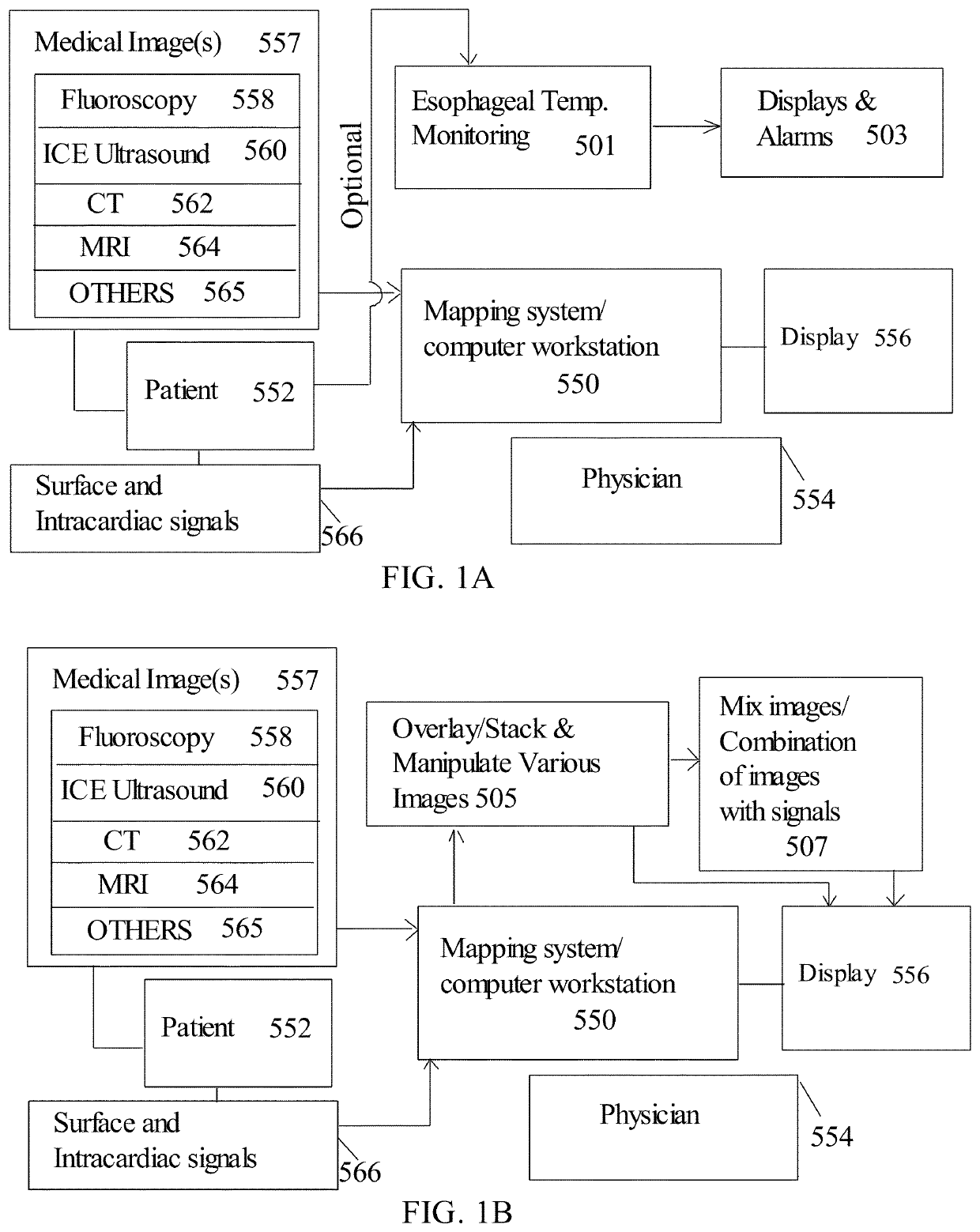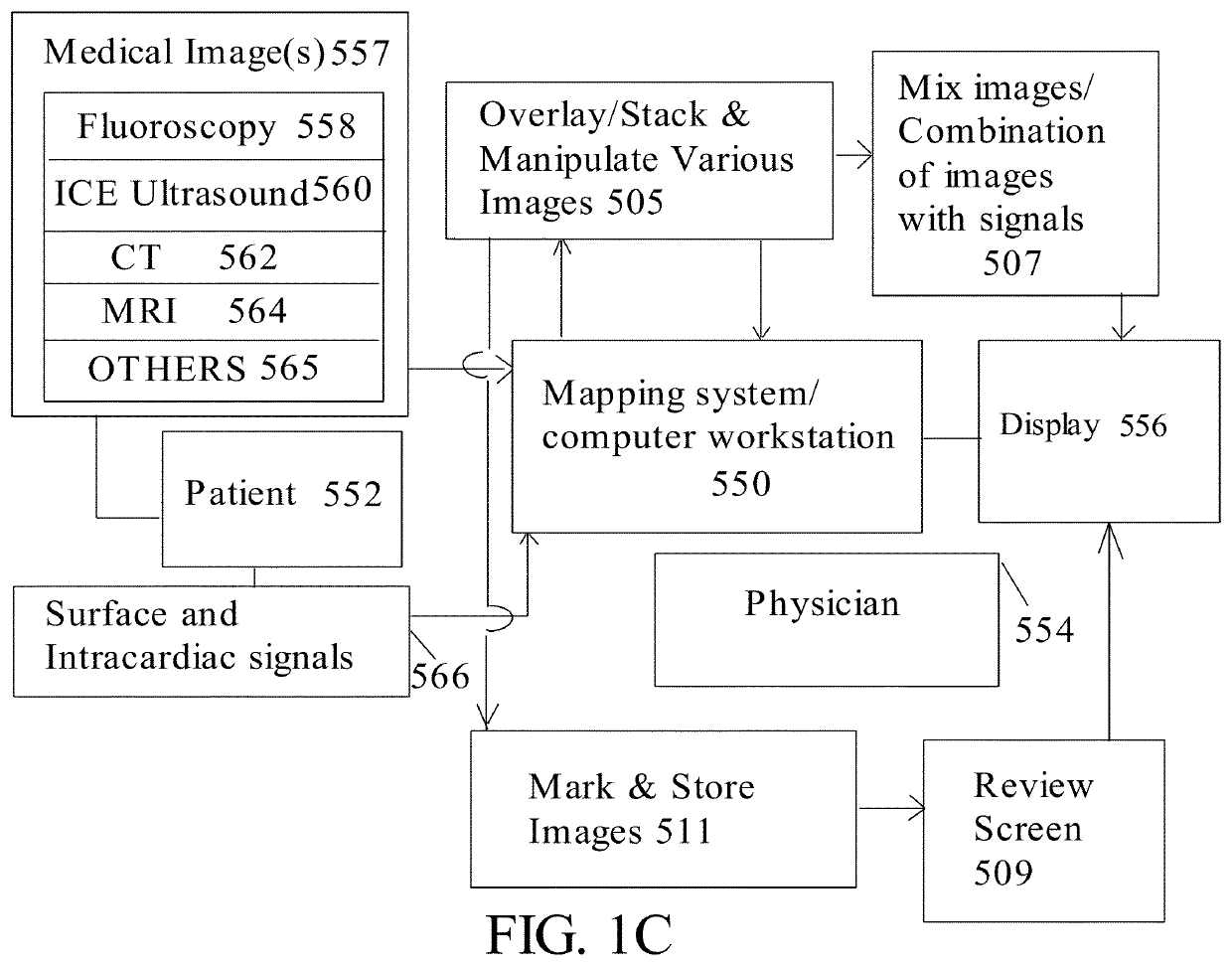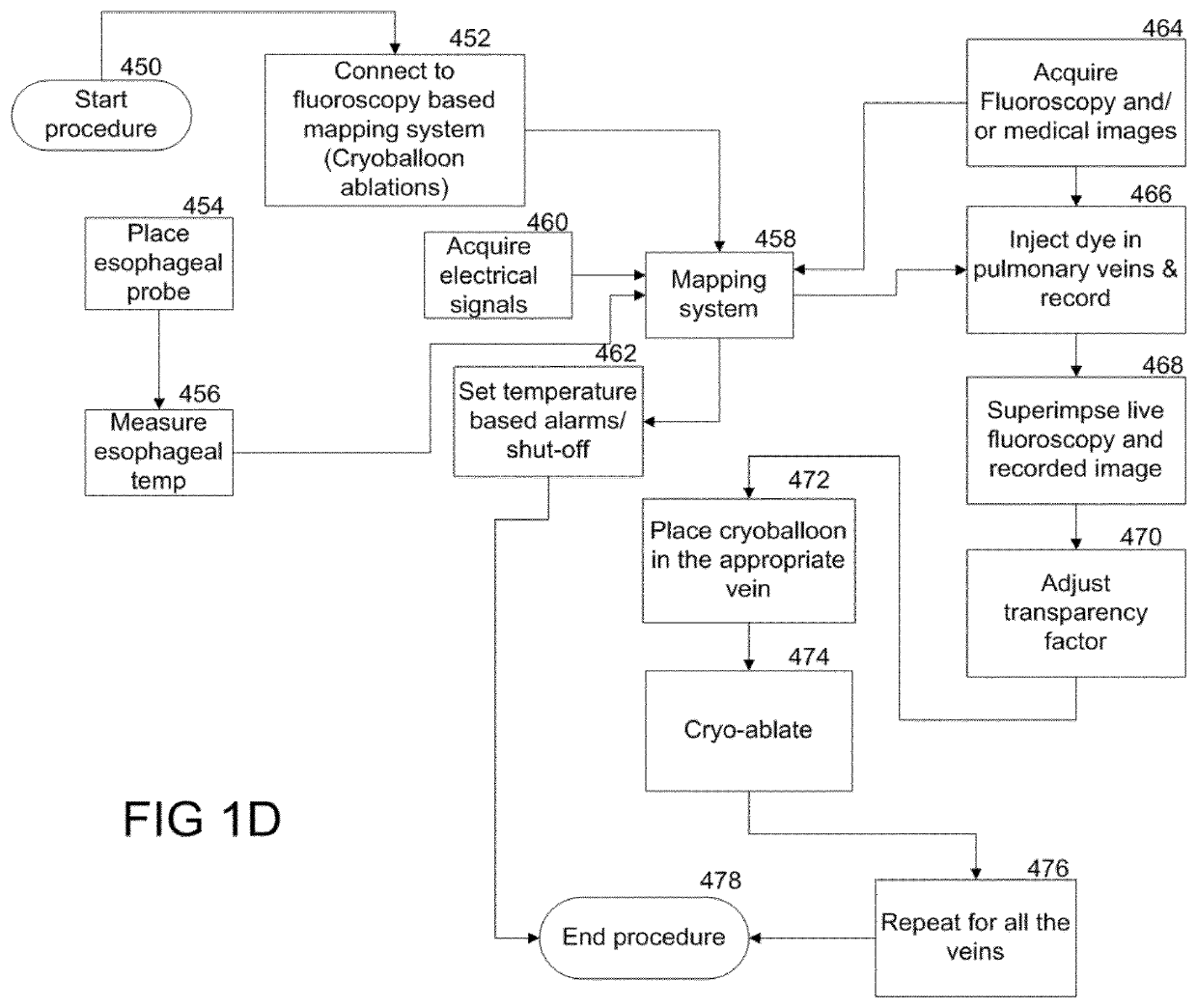Methods and system for cardiac mapping for atrial fibrillation using balloon based catheters utilizing medical images (CT or MRI in segments) and left ventricular lead placement for cardiac re-synchronization therapy (CRT)
a technology of cardiac mapping and atrial fibrillation, which is applied in the field of cardiac mapping for atrial fibrillation ablations, can solve the problems of increased morbidity and mortality, increased atrial fibrillation, and general decrease in the quality of life of those afflicted with atrial fibrillation
- Summary
- Abstract
- Description
- Claims
- Application Information
AI Technical Summary
Benefits of technology
Problems solved by technology
Method used
Image
Examples
Embodiment Construction
[0190]The following description is of the best mode presently contemplated for carrying out the disclosure. This description is not to be taken in a limiting sense, but is made merely for the purpose of describing the general principles of the disclosure.
[0191]In the methods and system of this disclosure, medical images based cardiac mapping / electrophysiology tools is disclosed for cardiac ablations for arrhythmias. The methods and system of this disclosure can be employed with a methodology for monitoring esophageal temperature. In another embodiment, the mapping system and mapping methodology can also be used without the use of temperature monitoring.
Definitions
[0192]Cardiac mapping systems are navigation and / or guidance systems used during a cardiac ablation procedure which includes making maps, guiding physicians to the optimal placement of the catheters. Cardiac mapping systems may utilize various types of medical images or a combination of medical images, or overlays of differ...
PUM
 Login to View More
Login to View More Abstract
Description
Claims
Application Information
 Login to View More
Login to View More - R&D
- Intellectual Property
- Life Sciences
- Materials
- Tech Scout
- Unparalleled Data Quality
- Higher Quality Content
- 60% Fewer Hallucinations
Browse by: Latest US Patents, China's latest patents, Technical Efficacy Thesaurus, Application Domain, Technology Topic, Popular Technical Reports.
© 2025 PatSnap. All rights reserved.Legal|Privacy policy|Modern Slavery Act Transparency Statement|Sitemap|About US| Contact US: help@patsnap.com



